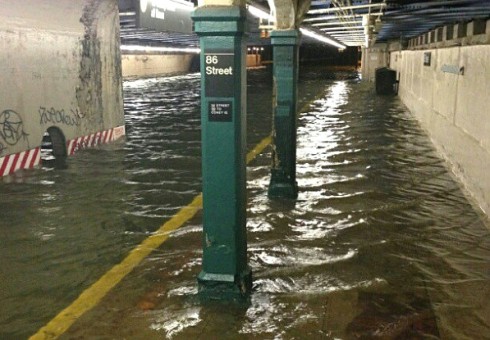September of my junior of high school—back in 2008—a Category 4 Hurricane, Ike, hammered the Gulf Coast. In Houston, oaks and pines cracked at their spines, falling on houses, cars, and power lines. Gray water rose high in the streets-turned-canals. Power lines hung limp, like forgotten party streamers, from their crooked poles.
The whole city shut down. My neighborhood lost power for two weeks.
At first, it felt like an adventure. The air was cool from the storm, and we opened all the windows to let in the breeze. Dad pulled out his old camping gear from the garage, and we used his small cook stove to heat up soup and boxed mac and cheese for our meals. We even had two large tanks of water in our attic, leftover supplies from the days when my Dad had prepared for the end of the world at Y2K.
The first night after the storm had died, Dad and I took our dog out on a walk through the dark streets. Wet leaves coated the sidewalks and splintered branches littered the ground. All of the houses were dark, and the neighbors had moved their cars into the garages. What can I say but it felt post-apocalyptic?
For the first time in a long time—with all of Houston’s many lights blotted out—we could see the star scape overhead. The moon drenched the houses in silver light. It was marvelous (though incredibly stupid and dangerous, now that I look back on it, with all those downed power lines, still static and alive).
Then reality set in. The city grew hot and the mosquitos bred in the water. We had no fresh laundry, no way to bathe ourselves, and nothing to do but tell stories, read books, and slowly surrender our minds to the inevitability of cabin fever.
What I remember most is not having a news channel, and getting information by word of mouth from neighbor to neighbor, from my grandfather, too—who is not a reliable source.
But those were the days before Twitter, the days before Instagram.
Now, with Hurricane Sandy, the power of social media has proved itself once again. I can only tell you in words, not pictures, what the streets looked like during Hurricane Ike. Who knows where the hard copy prints of photos have gone. If they’re not on my computer, they might as well not exist.
These days, though, the world has changed. Social media has stepped in to cover every part of the Hurricane. Our generation is that of the citizen journalist, and more than that—the citizen storytellers.
A whole new blog—Instacane—has been organized to collect the pictures of Sandy uploaded by the popular picture app, Instagram. That’s a new form of journalism. Flooded parking lots lined with the iconic NYC yellow taxi cabs, now underwater. The subway system, filled with green water, like a morphed image from Titanic, and the cars bobbing up from the depths of an underground parking garage. It’s another world up East, and the Twitter/Instagram generation is doing its part to document the damage.
Along with the journalism, though, there’s been quite a storm of story telling, too. Fake photos have flooded the web. Sharks swimming through the streets of Puerto Rico, purple swirling storm clouds around the Statue of Liberty, a scuba diver swimming through the flooded subway system—these fakes have heightened the stakes of the storm, and after all, isn’t that fair, too?
I think of Tim O’Brien’s book, The Things They Carried, and the story “How to Tell a True War Story.” According to O’Brien, sometimes a story has to be exaggerated or changed to get to the real heart of the capital-t Truth. Truth is emotional truth, not just a statement of facts. The picture of the swamped McDonalds (originally an art installation) demonstrates that feeling of an American normalcy dominated by uncontrollable and frightening forces.
The new social media have allowed us to enter a world where we can share our most painful, frightened moments—our vulnerability—with the rest of the world. It allows us, more importantly, to take comfort from that shared vulnerability. We are, all of us, in this world together.
Whether it’s Hurricane Katrina in New Orleans six years ago, Hurricane Ike in Houston four years ago, or Hurricane Sandy in New York and New Jersey today—global weather patterns have grown more erratic—and who knows who it will be tomorrow.
The least we can do is continue sharing what we have: our knowledge and our stories. Whether that means taking a picture of the flooded parking garage across the street, or photoshopping an ocean predator swimming beside a car, it’s all ultimately achieving the same goal. We are telling stories, and we are (hopefully) eliciting change.
![]()


